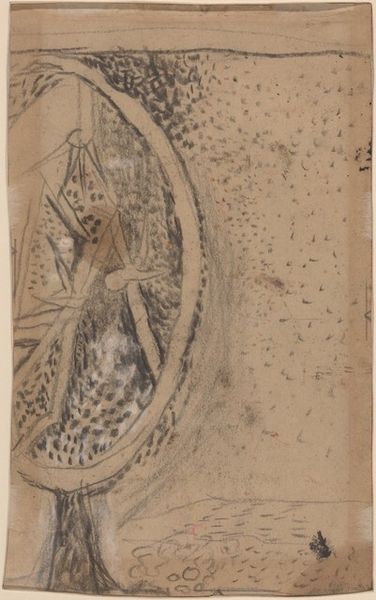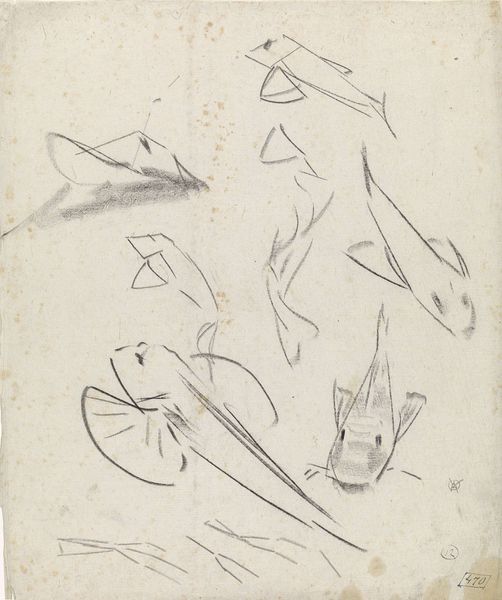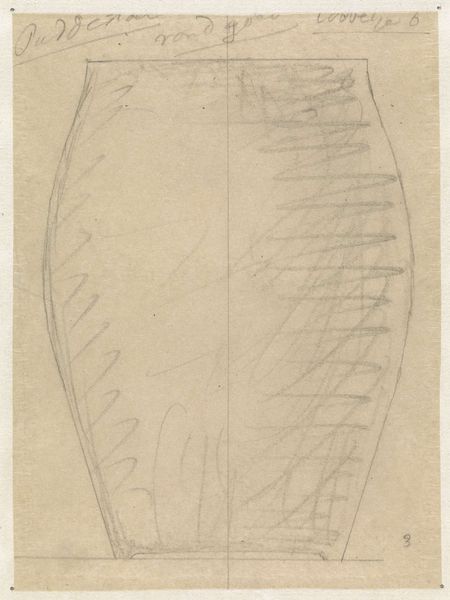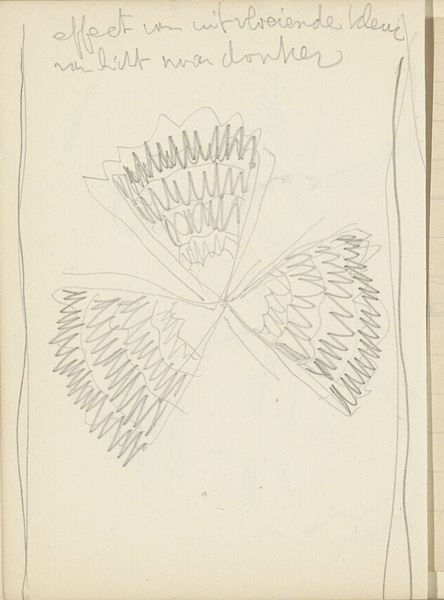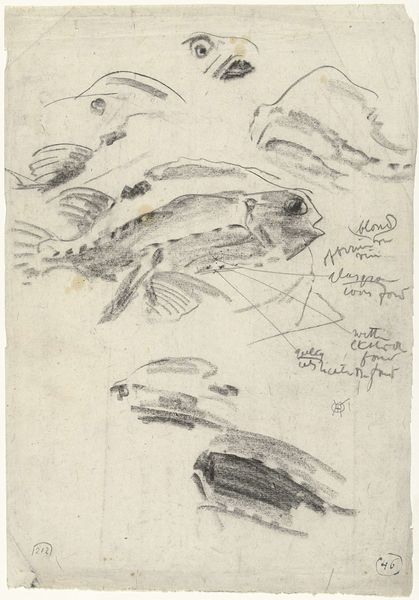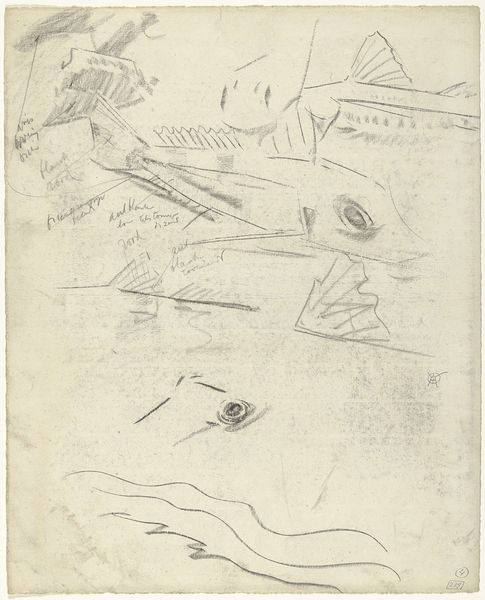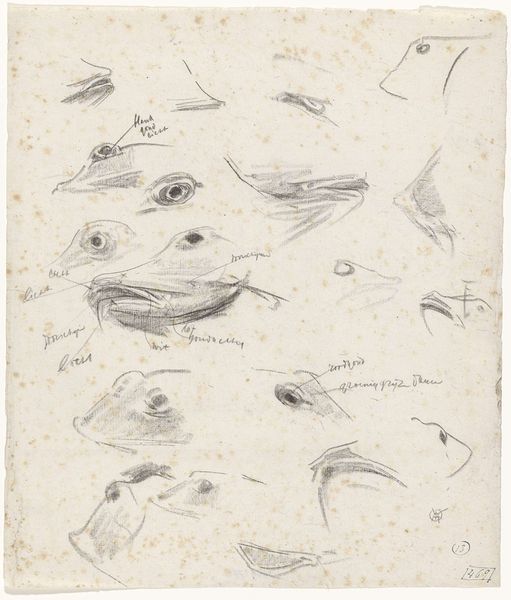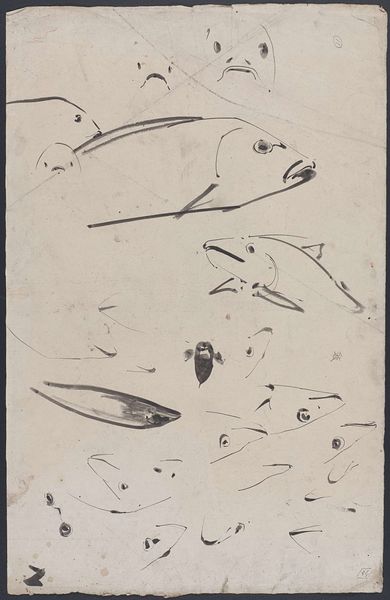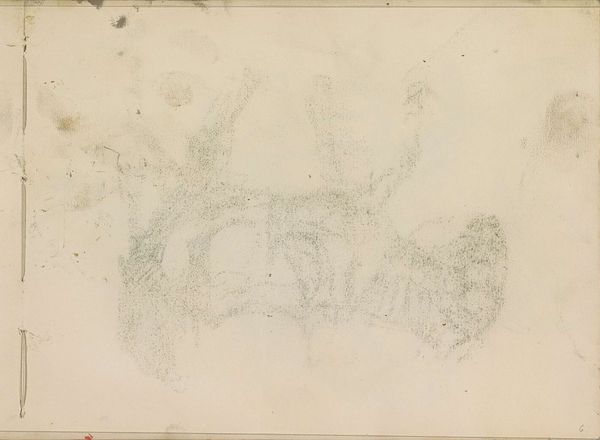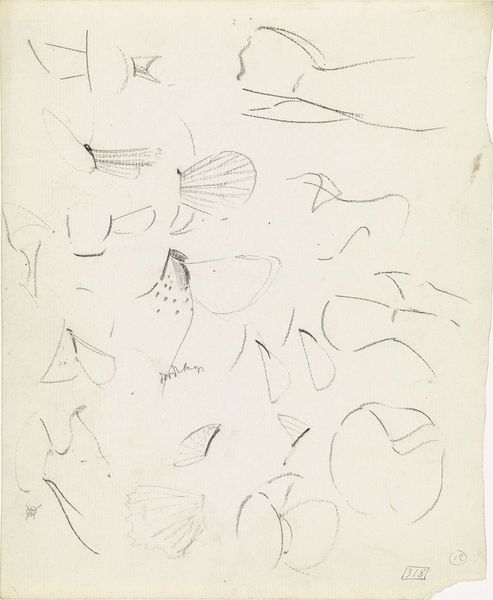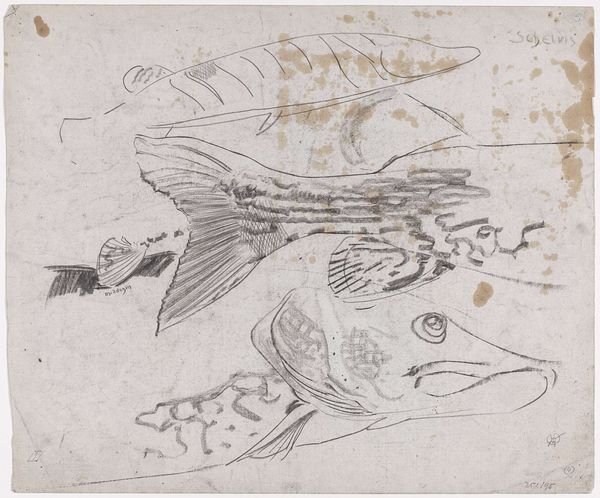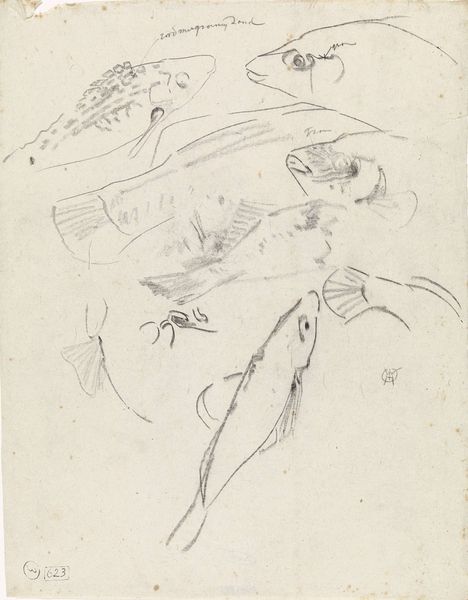
Schetsblad met studies van goudwinden en schubbenstudie 1876 - 1924
0:00
0:00
gerritwillemdijsselhof
Rijksmuseum
drawing, pencil
#
drawing
#
pencil
#
realism
Dimensions: height 533 mm, width 375 mm
Copyright: Rijks Museum: Open Domain
Editor: Here we have a drawing from between 1876 and 1924, a “Schetsblad met studies van goudwinden en schubbenstudie” or "Sketch sheet with studies of goldfinches and scale study" by Gerrit Willem Dijsselhof, rendered in pencil. It's quite striking – the fish is so detailed compared to the abstract studies of scales that surround it. What catches your eye when you look at this piece? Curator: I'm immediately drawn to the tension between the seemingly objective realism of the fish itself and the fragmented, almost mathematical representations of its scales. It prompts a critical question: How do we represent lived experiences, particularly those related to the natural world, without reducing them to mere data points or specimens? Editor: That’s a really interesting point. It does feel a bit… clinical, almost. Curator: Precisely. And that clinical aspect needs to be unpacked. Considering the historical period – late 19th, early 20th century – this dissection, this fragmented approach, speaks to the rise of scientific rationalism and its influence on art. The fish, a symbol of nature, is being deconstructed, analyzed. But what’s lost in this process of scientific inquiry? What is revealed? Editor: So, the drawing becomes less about the beauty of the fish and more about a particular way of understanding the world? Curator: Exactly. It raises critical questions about power structures inherent in how we choose to represent and ultimately understand the natural world and, by extension, the world around us. The separation of the fish and its scales highlights a disconnection – the whole from its parts – mirroring a potentially problematic distance between humanity and nature. Editor: I never would have looked at a fish and thought about power dynamics! Curator: Art has that power, doesn’t it? To reveal the hidden social and historical forces that shape even the most seemingly simple representations. Editor: Absolutely, that’s a perspective I’ll carry with me. Thanks!
Comments
No comments
Be the first to comment and join the conversation on the ultimate creative platform.
